Did you know? In Europe, in 2021 alone, the number of online retail users went from 476 million to almost 502 million. This number is expected to increase even more in the next few years.
It’s no surprise, then, that e-commerce platforms have become such a popular and essential tool for everyone who wants to sell their products and services. Even if you have a physical store, an e-commerce can help you boost your sales. However, with so many options available, choosing the right platform can be overwhelming.
In this article, we’ll try to help you choose the right platform for your online store, by going through the main aspects to consider. The right platform can help you maximize your sales, streamline your operations, and grow your business over time, so it’s a careful choice to make.
👀 If you’re looking for the most popular e-commerce platforms out there, check out this article. If you wonder what’s the BEST, then keep reading!

Let’s start from the beginning. What are the factors that you should consider when choosing an e-commerce platform?
The first and most important is, of course, its cost. If you’re just getting started with your e-commerce, you most likely don’t have the highest of budgets. But don’t worry! There are e-commerce platforms that are free or low-cost, and even with some limitations, you can still get the job done.
Here are some low-cost (or free!) e commerce platforms:
One thing to consider, though, is how you plan on growing your e-commerce. If it’s just a side hustle, then a free plan with basic options may be enough. But if it’s your main business activity, then consider that paying for additional features can be a good investment you make.
Another key point is how much you can customize your online store. Customization is important because it can make your store really your own.
Here, e-commerce platforms differ: some offer basic customization options, while others have more advanced features that allow you to create a unique online store. For example, many of them have pre-made templates that you can easily download and adapt to your brand’s style without any coding knowledge needed.
If everything goes as expected and orders start to flow, you also need a platform that is scalable, meaning that it can keep up with the volume of traffic and orders.
Three platforms with high scalability are:
Of course, many of these platforms offer the possibility to upgrade to a higher plan, so you don’t have to start right away with the largest plan.
Payment and shipping options are something fundamental to consider, because they can really make a difference in your sales: providing different payment and shipping options can broaden your customer base and allow you to expand your e-commerce internationally.
The majority of e-commerce solutions are compatible with the most popular payment methods, such as main credit and debit cards, PayPal, Apple Pay. But it really depends on your location and the types of payments you want to allow in your store.
As for shipping, e-commerce platforms usually offer integrated shipping calculators, label printing, and the ability to connect with shipping carriers such as UPS, FedEx, and DHL.
According to Pew Research Center, about three-quarters of Americans buy things online using their smartphone.
That’s why it’s so important that the e-commerce platform you choose is optimized for mobile!
A few factors to consider here are:
A mobile-optimized e-commerce platform is not only good for your customer’s experience, but it can also help you rank higher in search engines and increase your conversions.
👀 Curious to see the average conversion rate for ecommerce? Check out how you compare →
However, since most of the internet traffic comes from mobile phones, you can expect that all of these platforms provide mobile optimization.
Note
If you’re using Woo Commerce, mobile optimization will depend on how optimized is your website. That’s because Woo Commerce is a plugin, so it will mirror your website’s settings.
Lastly, a user-friendly interface. This is a crucial factor to keep in mind, because it can make a big difference in the overall user experience and customer satisfaction.
A good user interface should be intuitive, simple, and easy to use, allowing users to quickly and easily find what they’re looking for.
Now that we’ve gone through the main factors to consider, let’s go over a quick comparison of the main e-commerce platforms.
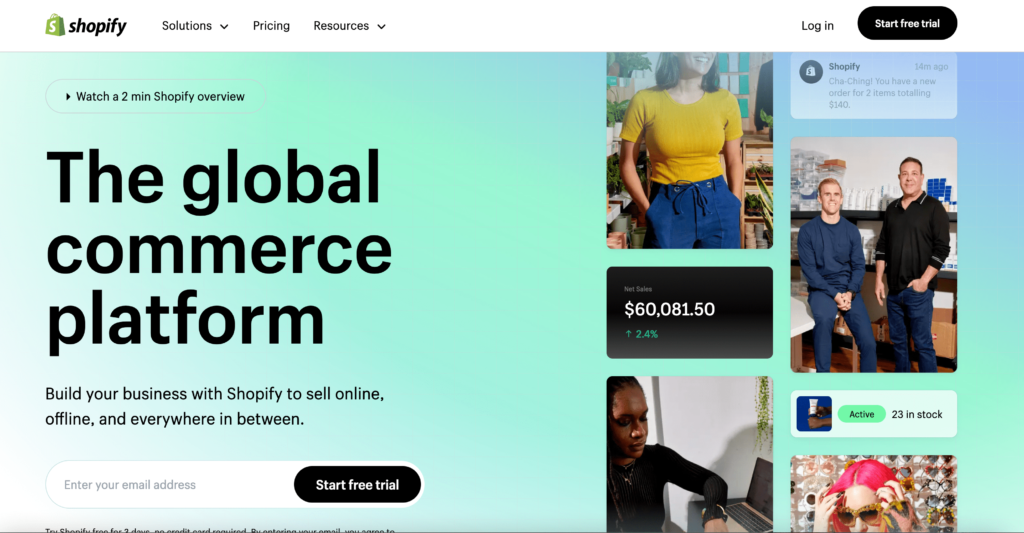
Shopify is probably the most popular e-commerce platform on the market, with millions of users across 170 countries. Shopify is suitable for everyone from small businesses to larger enterprises. It’s a great choice for those who want a comprehensive platform with a large user community and lots of resources.
✅ Pros
❌ Cons
Then check out our Shopify checklist: a step-by-step guide on how to launch your store!
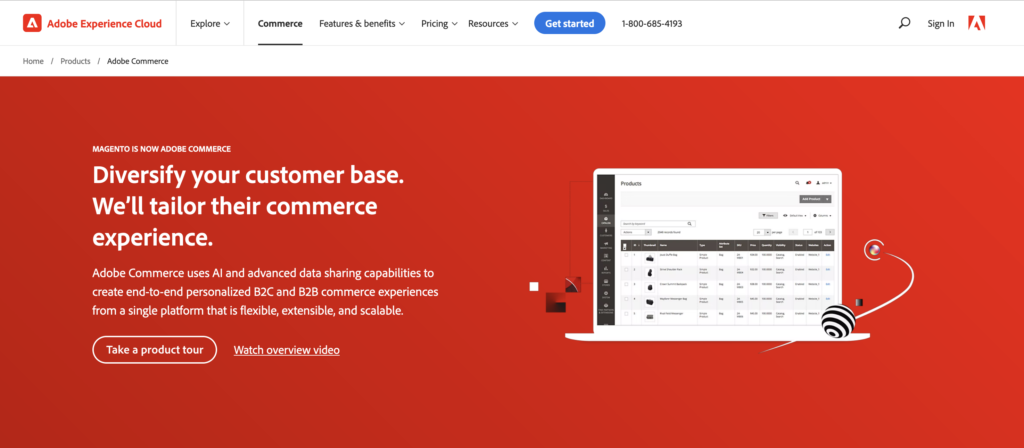
Magento (now Adobe Commerce) is a powerful e-commerce platform that is designed for larger businesses. As stated on their website, it “uses AI and advanced data sharing capabilities to create personalized B2C and B2B commerce experiences”.
✅ Pros
❌ Cons
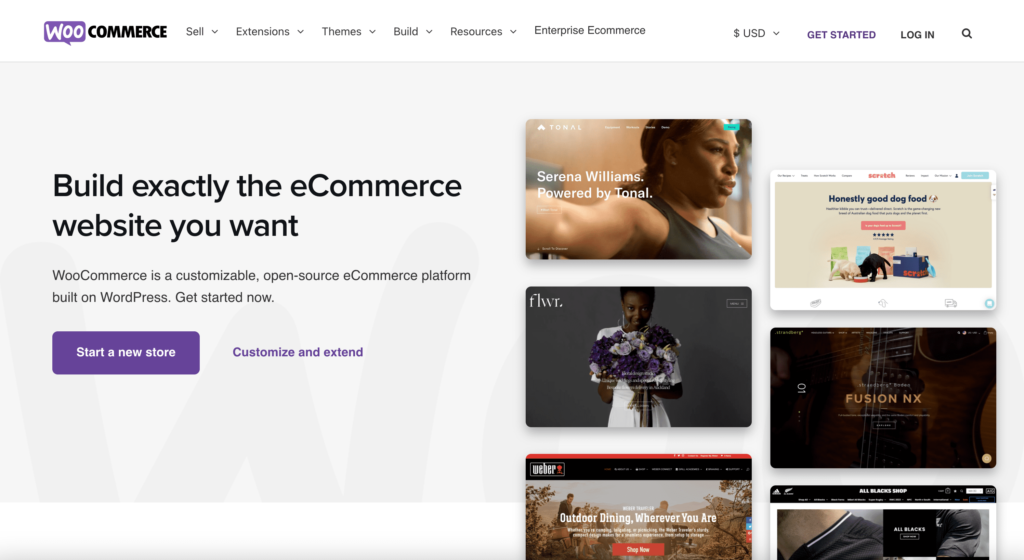
WooCommerce is a free and open-source e-commerce platform built on WordPress. You just need to add the WooCommerce plugin to any WordPress site and start setting up your new store.
✅ Pros
❌ Cons
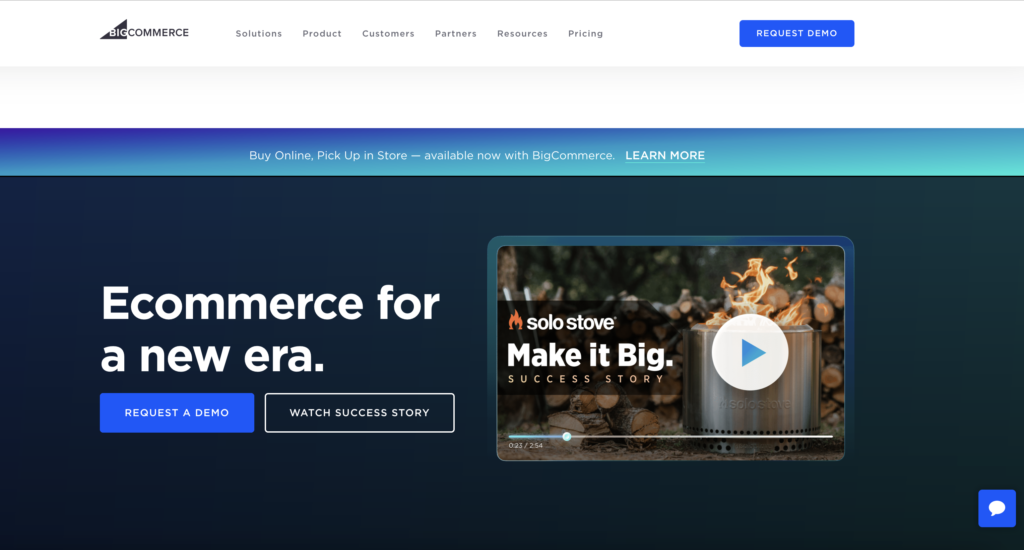
BigCommerce is an all-in-one e-commerce platform best suited for large and fast-growing businesses.
✅ Pros
❌ Cons
Find out here 👉 BigCommerce vs Shopify
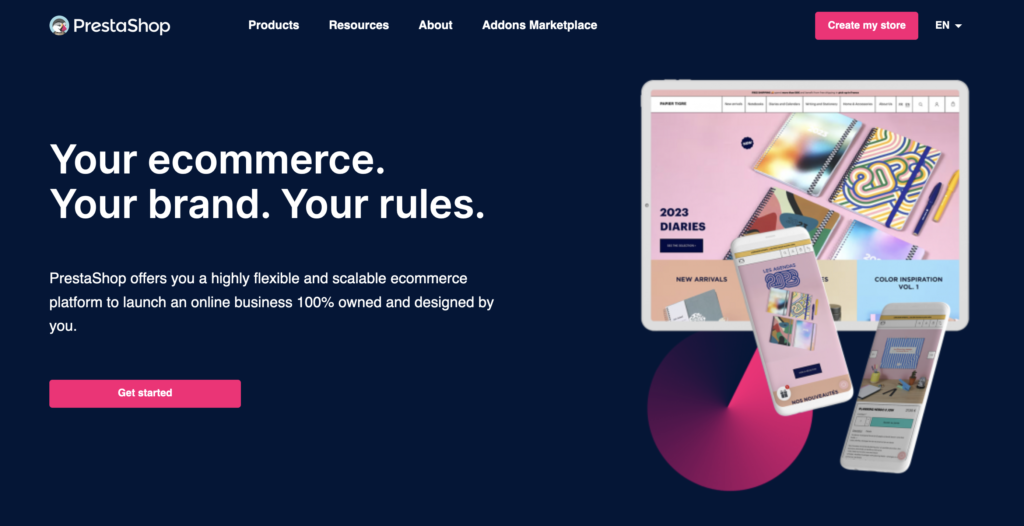
PrestaShop is a free and open-source e-commerce platform that is used by over 300,000 merchants internationally.
✅ Pros
❌ Cons
A startup or a small business may need different features.
👉 Check here Growing Your Online Presence: The Best Ecommerce Platforms for Startups
Whichever platform you choose, there are a few best practices that you need to make sure to follow, as they can improve the performance of your online store.
iubenda can help you in achieving compliance for your e-commerce and create a comprehensive Terms and Conditions document.
Remember, legal compliance is an essential step to getting your e-commerce up and running. So don’t skip it!
The solution to draft, update and maintain your Terms and Conditions. Optimised for eCommerce, marketplace, SaaS, apps & more.